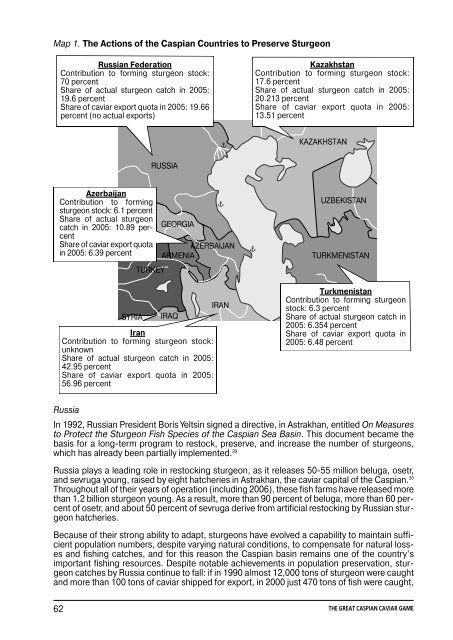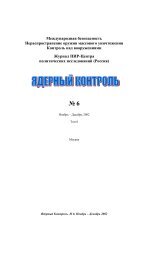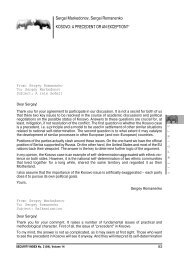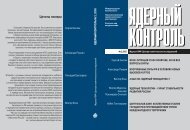Ekaterina Shadrina THE GREAT CASPIAN CAVIAR GAME
Ekaterina Shadrina THE GREAT CASPIAN CAVIAR GAME
Ekaterina Shadrina THE GREAT CASPIAN CAVIAR GAME
You also want an ePaper? Increase the reach of your titles
YUMPU automatically turns print PDFs into web optimized ePapers that Google loves.
Map 1. The Actions of the Caspian Countries to Preserve Sturgeon<br />
Russian Federation<br />
Contribution to forming sturgeon stock:<br />
70 percent<br />
Share of actual sturgeon catch in 2005:<br />
19.6 percent<br />
Share of caviar export quota in 2005: 19.66<br />
percent (no actual exports)<br />
Kazakhstan<br />
Contribution to forming sturgeon stock:<br />
17.6 percent<br />
Share of actual sturgeon catch in 2005:<br />
20.213 percent<br />
Share of caviar export quota in 2005:<br />
13.51 percent<br />
КАZAKHSTAN<br />
RUSSIA<br />
Azerbaijan<br />
Contribution to forming<br />
sturgeon stock: 6.1 percent<br />
Share of actual sturgeon<br />
catch in 2005: 10.89 percent<br />
Share of caviar export quota<br />
in 2005: 6.39 percent<br />
SYRIA<br />
TURKEY<br />
GEORGIA<br />
AZERBAIJAN<br />
ARMENIA<br />
IRAQ<br />
Iran<br />
Contribution to forming sturgeon stock:<br />
unknown<br />
Share of actual sturgeon catch in 2005:<br />
42.95 percent<br />
Share of caviar export quota in 2005:<br />
56.96 percent<br />
IRAN<br />
UZBEKISTAN<br />
TURKMENISTAN<br />
Turkmenistan<br />
Contribution to forming sturgeon<br />
stock: 6.3 percent<br />
Share of actual sturgeon catch in<br />
2005: 6.354 percent<br />
Share of caviar export quota in<br />
2005: 6.48 percent<br />
Russia<br />
In 1992, Russian President Boris Yeltsin signed a directive, in Astrakhan, entitled On Measures<br />
to Protect the Sturgeon Fish Species of the Caspian Sea Basin. This document became the<br />
basis for a long-term program to restock, preserve, and increase the number of sturgeons,<br />
which has already been partially implemented. 29<br />
Russia plays a leading role in restocking sturgeon, as it releases 50-55 million beluga, osetr,<br />
and sevruga young, raised by eight hatcheries in Astrakhan, the caviar capital of the Caspian. 30<br />
Throughout all of their years of operation (including 2006), these fish farms have released more<br />
than 1.2 billion sturgeon young. As a result, more than 90 percent of beluga, more than 60 percent<br />
of osetr, and about 50 percent of sevruga derive from artificial restocking by Russian sturgeon<br />
hatcheries.<br />
Because of their strong ability to adapt, sturgeons have evolved a capability to maintain sufficient<br />
population numbers, despite varying natural conditions, to compensate for natural losses<br />
and fishing catches, and for this reason the Caspian basin remains one of the country’s<br />
important fishing resources. Despite notable achievements in population preservation, sturgeon<br />
catches by Russia continue to fall: if in 1990 almost 12,000 tons of sturgeon were caught<br />
and more than 100 tons of caviar shipped for export, in 2000 just 470 tons of fish were caught,<br />
62 <strong>THE</strong> <strong>GREAT</strong> <strong>CASPIAN</strong> <strong>CAVIAR</strong> <strong>GAME</strong>








